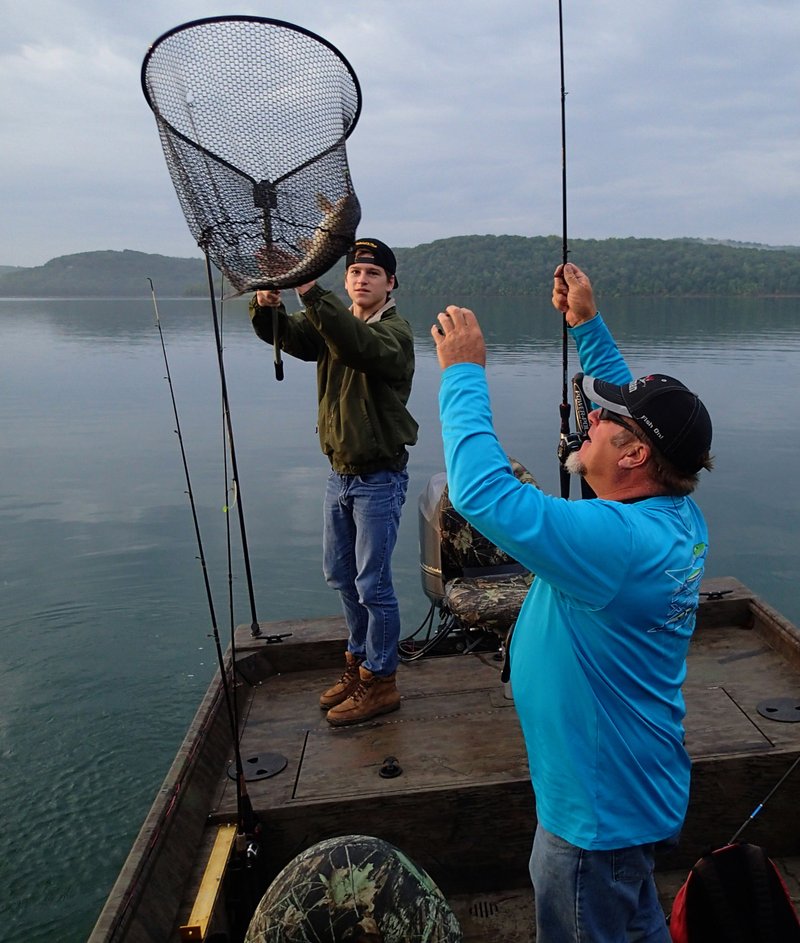When Jon Conklin trolls for walleye at Beaver Lake, his pace is slower than slow. It's a downright mosey.
Conklin creeps his boat along rocky points and shorelines when he's on the prowl for walleye. Slow trolling keeps his bait in front of a fish longer. It's one key to a technique the Beaver Lake walleye guide uses to put fish in his livewell.
Catch a walleye
Walleye must be 18 inches or longer to keep at Beaver Lake or the White River below Beaver Dam. The daily limit is four.
Information: Jon Conklin, 479-684-1834, www.beaverlakefisho…
A slow speed is critical. So is knowing where to fish and how to rig up for walleye. Conklin uses a set-up called a "slow-death rig" that's popular with walleye anglers up north, particularly the Dakotas. It's aptly named because you fish it slow and it's deadly on walleye.
The rig uses a bottom-bouncer weight, a small spinner and a hook that makes the nightcrawler spin when trolled.
Conklin, of Goshen, showed how effective the method is when he, his son Noah, 15, and your faithful outdoors reporter hit the lake at first light on May 15. Here's how Conklin rigged our rods:
A three-way swivel is tied to the main line. A dropper line is tied to one eye of the swivel and the bottom bouncer tied to the end of the dropper line. Conklin tied a leader of 10-pound test line to the third eye, with a spinner, some small beads and a hook on the tag end of this line.
The spinner is a Smile brand spinner that's shaped like a tiny banana. It spins at very slow speeds, about 0.5 to 1.5 mph, the ideal trolling speed for the technique.
Conklin threads half a nightcrawler on the hook that has a bent shank which makes the nightcrawler spin when trolled. He uses a swivel on the leader to prevent line twist. He lowers the whole set-up to the bottom and starts trolling.
Most of the guide's walleye fishing is on the north end of Beaver Lake in the Lost Bridge area. Points on the main body of the lake are his hot spots. These points are close to deep water, which Conklin says is another key.
"Fishing this way, you get a lot of action even with the slow speed. Trolling slow keeps the nightcrawler in front of a fish longer," he said.
Depth is important, too. Conklin trolls in water 25 feet deep and keeps the nightcrawler close to the bottom.
When the first walleye bit about sunrise, it was game on after Conklin set the hook. Not any old hook-set will do. It takes some will power to set the hook the right way, by letting the fish take the bait first.
"When you feel that bump, you sweep your rod back toward the fish and let it take the nightcrawler," Conklin said. "When you feel another thump, that's when you set the hook."
Fishing is best from first light until 11 a.m., or 4 p.m. to dark. Conklin prefers the later window.
Walleye weren't the only fish to come knocking on our morning trip. Our mixed catch of a dozen fish included walleye, smallmouth bass, catfish and bluegill. "Everything eats nightcrawlers," Conklin chuckled.
And nearly every angler enjoys eating walleye, one of the tastiest fish in the lake.
Sports on 05/28/2015

